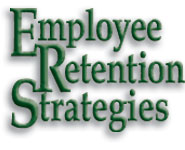A couple of weeks ago, we highlighted an article written by Dr. John Sullivan regarding how turnover will increase once the economy starts to recover. If your company is going to retain good agents (and employees), more emphasis must be put on retention metrics and strategies. In the previous WorkPuzzle article, I covered retention metrics. Today we’ll discuss Dr. Sullivan’s retention strategies.
 Retention strategies can be broken down into three categories:
Retention strategies can be broken down into three categories:
1. Laissez-faire Approaches: This is the most common approach and involves everything from doing nothing (i.e. turnover is normal and unavoidable) to relying solely on effective recruiting. If your company is going to be successful with this approach alone, you must develop excellent recruiting and talent pool processes that provide talent on demand.
2. Company-wide Approaches: People generally seek out employment to provide income and security to their families and to find personal engagement. Most company-wide approaches involve making compensation opportunities better (addressing income), making benefits better (addressing security), and increasing the workforce’s engagement in their work.
If your company is known for not being competitive with other companies with regard to compensation and benefits, you’ll likely have a retention problem. However, the research suggests that incrementally increasing compensation and benefits with the hope of increasing retention will most likely cost more than it produces in retained revenue. 
A better return can be achieved by attempting to increase the workforce’s engagement in their work. Doing this on a company-wide basis is a challenge. Companies have attempted many things with varying levels of success. Here is a short list of ideas that Dr. Sullivan presents:
- Employment Branding Strategy: Build the brand of the company up in the mind of the agents. Agents will want to stay with a firm that they perceive as the best place to work.
- Blocking Strategy: Erect barriers that keep external recruiters from contacting your company’s agents and employees.
- Casino Strategy: Make the physical work environment so attractive that the environment by itself becomes a retention tool. Casinos use the physical environment to keep their customers from thinking about the outside world. Google pioneered this in the employment world by providing free food, a gym, on-site events, etc.
- Improve Training, Learning and Development: This is the most popular among real estate companies and probably the most effective. High-performers tend to have a keen interest in continuous learning and will stick with a company where that need is being met. Coupled with increased opportunities to use new skills and techniques, well-trained agents can quickly contribute to revenues.
- Remove Ineffective Managers: The number one reason an agent or employee leaves a company is a poor relationship with their first level manager. Replacing individuals who are a poor fit for the management role is the best long-term strategy for reducing turnover.
3. Personalized Approaches: With people, one-size rarely fits all the individuals involved. Targeting retention strategies to the individual needs of an agent takes much more time and effort, but it also produces the greatest results. This is where good metrics and open lines of communication will allow meaningful and productive dialog to take place. Sometimes it’s difficult for agents to quantify what they want. Concrete data regarding performance metrics, opportunities, and a competitor’s performance can keep the conversations from focusing too much on emotion or personal opinion. Dr. Sullivan suggests a personalized plan should address issues such as:
- Flexibility: Think of things that can be done to reduce an agent’s stress and the incremental costs of doing business inside the framework of your company. Focus on issues that would strengthen the individual’s family and personal relationships.
- Special Perks and Opportunities: Special perks have been used for many years by companies to incentivize performance. Why? They work! Rotate the perks around — People get bored with the same old thing. Also, try to customize the perks to the agent’s interests. It is tough for a competitor to duplicate thoughtfulness. In addition to perks, consider making special business/revenue generating opportunities available to those agents whom you want to retain. This can be tricky because it can discourage others on your team, but a good manager can find the right tension between these competing priorities.
- Challenge/Exposure Strategy: This approach increases the opportunities for targeted agents or employees to be challenged with exciting stretch projects and rotations. In addition, agents interested in increasing their exposure to upper management executives are provided with an exposure plan to increase their visibility.
- Demonstrating Impact: This education strategy focuses on improving retention rates of key agents and employees who may be unaware of the significant impact of their work. It proactively “walks them downstream” in order to see the impact of their work by meeting and interacting with not only customers, but also others in the company and your organization at large.
There are many more issues and ideas that could be addressed regarding this topic. Hopefully, this article will serve to ignite your creativity regarding how you can retain the agents and employees on your team. Don’t underestimate the disparagement that many people feel toward their employers due to the difficult economic circumstances. If you do, you’ll have to suffer through the potential loss of those agents and employees…a loss that may have been prevented…
Editor’s Note: This article was written by Ben Hess. Ben is the Founding Partner and Managing Director of Tidemark, Inc. and a regular contributor to WorkPuzzle. Comments or questions are welcome. If you’re an email subscriber, reply to this WorkPuzzle email. If you read the blog directly from the web, you can click the “comments” link below.

